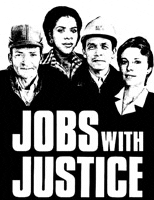
Richard Rothstein’s “The Making of Ferguson“ links some modern symptoms of racial inequity back to World War II, when many racially discriminatory practices became systematized. A strong economy, labor unions, and federal agencies—the Veterans Administration, the Federal Housing Agency, and others, helped to create a white middle class through good wages, homeownership, and educational benefits, but local zoning laws, housing covenants and real estate practices created block busting, redlining, and other practices that largely excluded African Americans from this economic boom.
There are, however, solutions to the racial divide laid bare—here in St. Louis and elsewhere. For many, the courage of young protesters has been inspirational and has helped older civil rights activists recommit to the cause. Even better, some social justice advocates who have been on the frontlines of the demonstrations with new and old activists have been working together to create a vision for the St. Louis region (they include Missouri Jobs with Justice; the St. Louis Clergy Coalition; MORE; Organization for Black Struggle; Metropolitan Congregations United; and United Congregations of the Metro East).
Here's part of their vision:
Criminal justice: White, black and brown people are stopped by the police in equal numbers. The police force for each city works cooperatively with regional law enforcement. Excessive fines and fees that unfairly impact low-income people are eliminated. The racial make-up of each police force reflects the racial make-up of its community. Drug courts and restorative justice systems are used so convicted offenders are rehabilitated and make restitution when possible. Community policing practices are used, and St. Louis' rate of police shootings starts to approach that of Oakland and other exemplary cities.
Education equity: Low-performing schools shift to a community schools model, with wrap-around services, creating a “village” to help each child. Cincinnati's schools have turned themselves around using this model. Quality pre-k school and services are also available to every family.
Regional government: The St. Louis region works to create a consolidated city-county government system similar to Indianapolis and Kansas City. Over the next decade, to reduce inequity and increase efficiency, school districts, municipalities, fire districts, and police departments merge or combine services whenever possible. In the short-term, high-performing districts and governments partner with and mentor low-performing ones, trading shifts and creating “mastery” systems to promote excellence. Tax increment financing and other corporate benefits that rob school districts of precious revenue are stopped.
Jobs: every major construction project, including university expansions and hospital building projects, uses the “Missouri Model.” MoDOT and St. Louis' Metropolitan Sewer District are pioneering the Missouri Model to diversify the construction trades. Apprenticeship programs for women and people of color are strengthened. President Obama uses the Department of Labor's regulatory system to reform affirmative action regulations like Executive Order 11246, which has not been updated in 30 years.
Government buildings are rehabbed and made green, using the Missouri model for workforce diversity so that people of color benefit from green jobs. The minimum wage is increased to more than $10 an hour throughout Missouri and paid sick leave is available.
It's a tall order, and the activists on the street in St. Louis and across the country are aware of that. But they march because they hope, not because they despair. Imagine what will happen when our whole country starts hoping together.
(Image credit: Courtesy of Missouri Jobs with Justice)





Comments